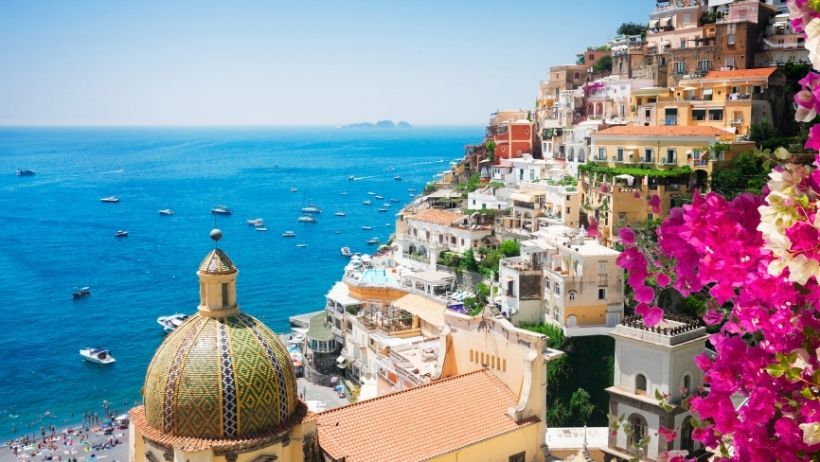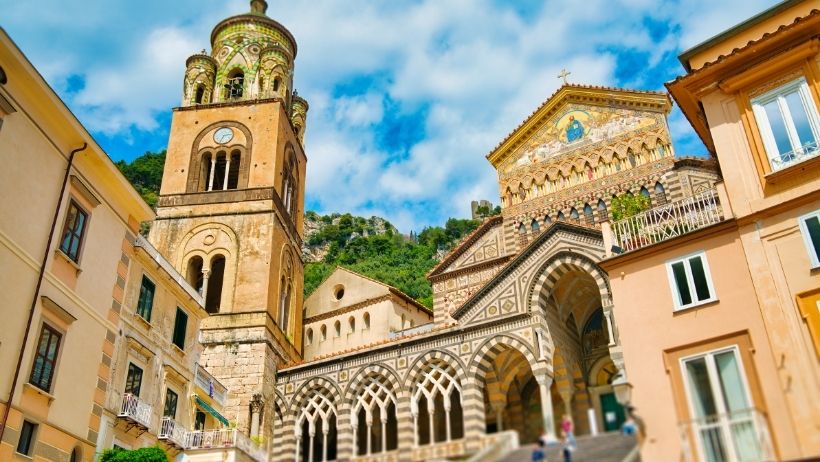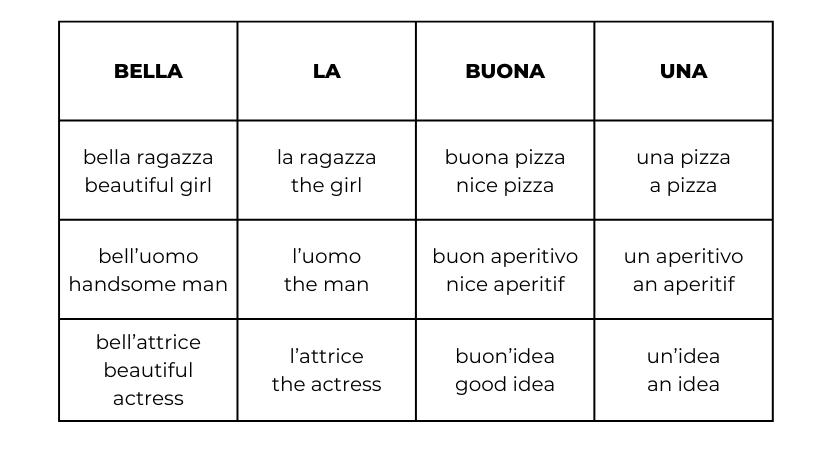Being able to describe people, things and places is part of what makes human interaction so colorful and expressive. We all have impressions of things being ‘beautiful’, ‘funny’, or ‘disgusting’, and when speaking Italian, we need to know how to express the same ideas, don’t we?
Adjectives in Italian differ from English in a three main ways:
1️⃣ They must match the gender of the noun they are describing, so either Masculine or Feminine
2️⃣ The must agree with the number of the noun they are describing, so either Singular or Plural
3️⃣ They typically go after the noun they are describing, with a few common exceptions
Il ragazzo alto the tall boy
La ragazza carina ➟ the cute girl
Lo studente magro ➟ the skinny student
L’attrice famosa ➟ the famous actress
Un libro nero ➟ a black book
Una persona cattiva ➟ a mean person
Do you notice that all these singular adjectives end in either -O or -A, even if the noun ends in -E? This can be confusing as you may be tempted to match the same ending letter for both the noun and the adjective.
E.g. *Lo studente magre OR *Lo studento magro
These would both be wrong as:
1️⃣ MAGRE is the Feminine Plural form, not the Masculine Singular form – MAGRO
2️⃣ STUDENTO is not a word in Italian – it’s STUDENTE
Knowing this, let’s talk about Adjectives that actually do end in -E. What?! Don’t worry, the more you see and practice them, the more it will just come naturally to you!

Adjectives that End with -E
Many adjectives take either the Masculine ending -O or the Feminine ending -A in their singular form, but there are a ton of really common adjectives that end in -E. If anything, these adjectives are easier to use as they don’t change form in the singular for either gender!
Here are some common -E ending adjectives:
Grande ➟ big
Intelligente ➟ intelligent
Veloce ➟ fast
Giovane ➟ young
And here are some examples of how they are used with nouns:
La casa grande ➟ the big house
Il ragazzo intelligente ➟ the intelligent boy
La ragazza intelligente ➟ the intelligent girl
Lo studente giovane ➟ the young student
La macchina veloce ➟ the fast car
BELLO and BUONO: A Special Case
Were you wondering if we were going to mention anything about BELLO or BUONO seeing as these are two adjectives that you probably already knew before you knew any Italian! (“Bellissimo!”)
They work a little bit differently to most Adjectives and seeing as they are two Adjectives that you will surely be using a lot (Italians certainly do!), it’s important to know how to use them properly.
First of all, BELLO means ‘beautiful’ or ‘handsome’ and BUONO means ‘good’ or ‘nice’ in terms of quality or taste.
Unlike most Adjectives in Italian, BELLO and BUONO usually go before the noun, just like in English.
The most interesting part, and possibly the most challenging, is that these two Adjectives behave just like the Articles in that they change their form depending on the sound that follows.
This will be easier to illustrate using tables to compare the similarity between these Adjectives and the Articles that we’ve already looked at.
MASCULINE
As you can see, both BELLO and BUONO follow the exact same pattern as the Articles in the Masculine and Feminine gender.

Essential Italian Adjectives
Here are the essential Italian adjectives that you need to know as a beginner. They are listed with their opposite-meaning adjective as it often helps you remember them by learning them as a pair. They are given here in their standard form which is the Masculine Singular, so remember that when using them to describe something, it must match the gender and number of the noun it describes.
bello ➟ beautiful ≠ brutto ➟ ugly
buono ➟ nice/good ≠ cattivo ➟ bad
bravo ➟ good ≠ cattivo ➟ bad
grande ➟ big ≠ piccolo ➟ small
alto ➟ tall ≠ basso ➟ short
lungo ➟ long ≠ corto ➟ short
nuovo➟ new ≠ vecchio ➟ old
giovane➟ young ≠ vecchio ➟ old
allegro ➟ happy ≠ triste ➟ sad
interessante ➟ interesting ≠ noioso ➟ boring



